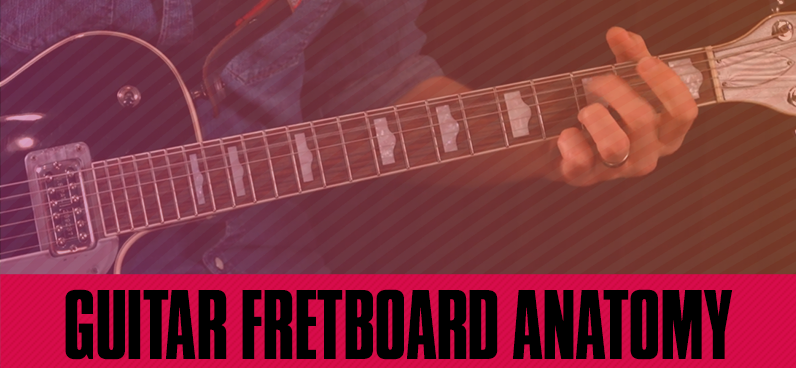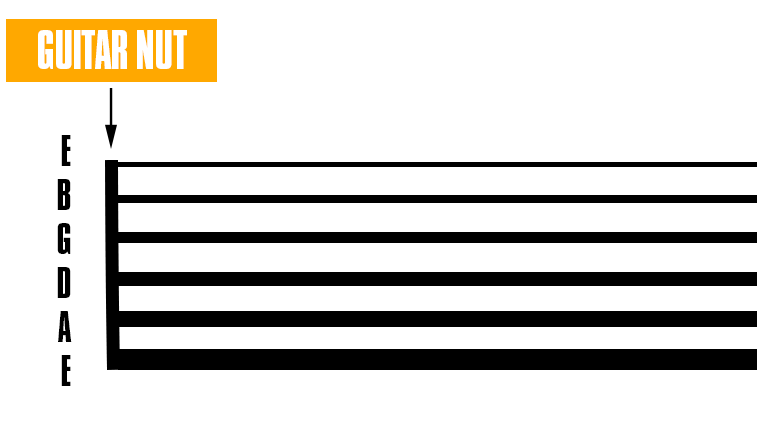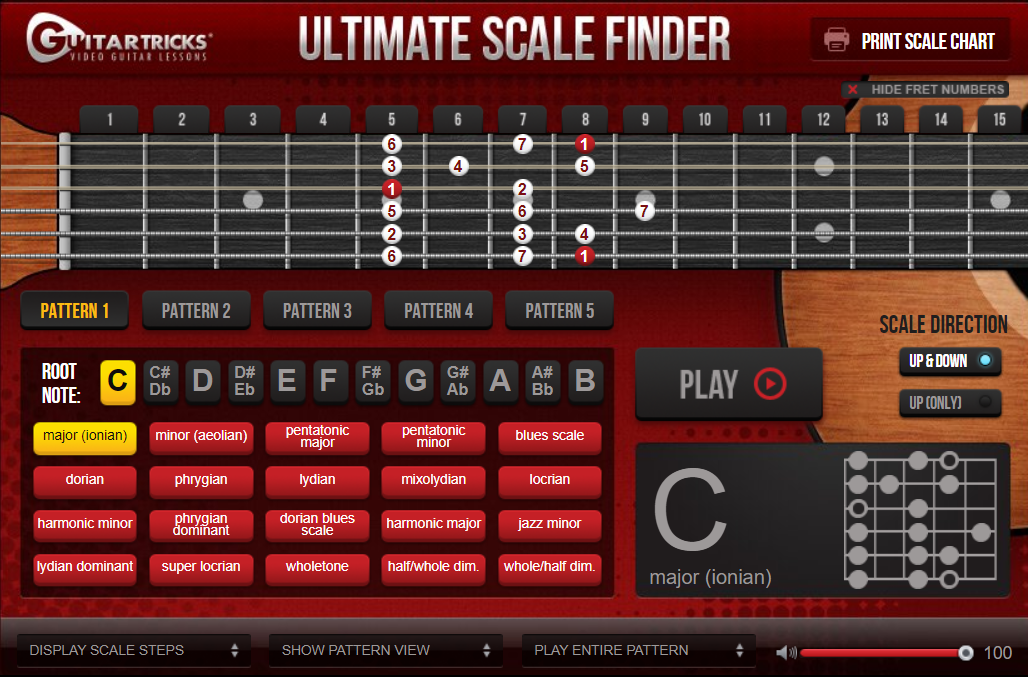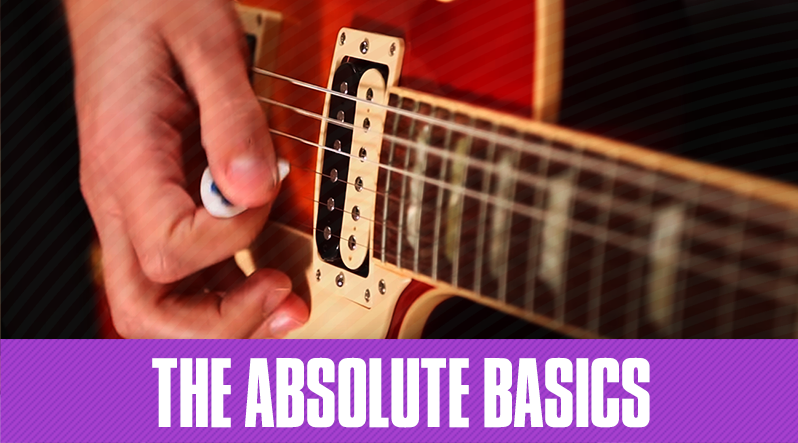
The guitar fretboard or “fingerboard” is the part of the guitar where all of the metal frets are placed.
The fretboard is used by holding down the strings against each fret and then either picking or strumming some, or all of the strings.
The vibrating motion of the string against the metal frets create the sounds of different musical notes.
The fretboard of a modern guitar is made up of a number of pieces and it’s important for guitar players to know which piece is which, as well as learn ways to develop memorization of the fretboard notes.
The fretboard is usually a piece of wood that sticks out from the body of the guitar, and is also referred entirely as the “neck” of the guitar.
The fretboard itself can be a separate piece of wood that sits on top of the neck wood.
Popular wood combinations are a neck made of maple, and rosewood fingerboard.
But it’s also common for the entire neck and fingerboard to be entirely one piece of wood.
This is all great information if you ever plan to build a parts guitar.
Guitar Fretboard Anatomy
At the very top of the guitar is the headstock, where all of the strings are tied up on a post, but right below that is the nut.  The guitar nut is the piece of the guitar where the strings run through to get to the headstock.
The guitar nut is the piece of the guitar where the strings run through to get to the headstock.
The nut of the guitar is a vital piece of the hardware since it holds each string in place and can affect the tuning and playability of a guitar.
A nut that is too small, or too big in its cavity can result in a guitar that can feel difficult to press down - its action too high, while a nut that is too deep can result in the strings being too low and that will cause rattling.
A poor nut can contribute guitar tuning issues, strings fretting out or the aforementioned string buzz.
Next on the fretboard are the frets themselves.
The frets are metal strips that are slotted into the wooden part of the board.
You press the strings down onto the fretboard between these frets to make musical notes or guitar chords.
The distance between one fret to the next will vary as you ascend, or go higher in pitch.
For example, since guitars are constructed so that the lower notes are closer to the nut, this means that as you move toward the body of the guitar on the fretboard, the notes you play will sound higher-pitched.
This is because the length of the vibrating string is getting shorter each time you hold down a fret, moving toward the body.
A three foot piece of vibrating steel string will sound lower than a 1 foot piece of vibrating string.
The same applies to guitar strings.
 Another great way to learn the fretboard is to use the Guitar Tricks Scale Finder
Another great way to learn the fretboard is to use the Guitar Tricks Scale Finder
If you’re new to guitar, you’re probably also wondering what the small dots or marks on the guitar fretboard are.
These are markers that are made for guitar players.
There are usually 20 or more frets on a guitar and most guitars will have markers on the 3, 5, 7, 9 and 12th frets.
These markers help guitar players move around the fretboard without having to think or count the frets.
They’re a simple visual cue for helping one move across the neck and find the correct note.
Why it's Important
It’s important to know the guitar fretboard because that’s where all of the notes are, and if a guitarist can easily identify different notes of the board, then they’re in great shape.
It’s also important for a guitar player to understand the anatomy of their instrument so that they can easily troubleshoot any issues they’re having while playing.
If a guitar is tuned to the standard E tuning, this means that the playing the open E string is an E note.
But we also know, from the power of basic guitar music theory, that the first fret of the low E string is an F note, and that the fifth fret of that same string is an A, etc.
There are a number of great ways to learn and memorize the fretboard notes.

